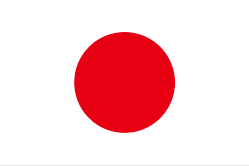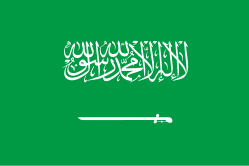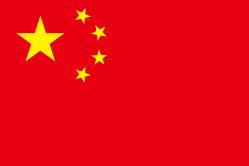In the ever-changing world of fashion, the ability to quickly respond to market trends and continuously launch new products is more important than ever. Fast fashion brands like ZARA and Uniqlo have mastered the art of rapid production and frequent product releases. However, traditional printing methods often fall short when it comes to meeting the fast fashion industry's demands for speed, flexibility, and high-quality prints. This is where Direct to Film (DTF) printing technology comes into play, offering a revolutionary solution that aligns closely with many core needs of fast fashion brands.
Core Demands of Fast Fashion Brands: Rapid Market Response and Continuous New Product Launches
Fast fashion brands operate in a highly competitive and dynamic market. Their success hinges on their ability to stay ahead of trends and promptly deliver fashionable and affordable clothing to consumers. This requires a production process that can rapidly adapt to changing consumer preferences and produce new designs quickly without compromising on quality.
ZARA, for instance, is known for its agile supply chain that can design, produce, and distribute new products within weeks. Similarly, Uniqlo's innovative "LifeWear" concept emphasizes versatility and quality, which necessitates a production system capable of handling a diverse range of designs and fabrics. While these large brands rely on various complex global production and printing technologies (including traditional bulk printing methods), their demand for speed, small-batch adaptability, and design flexibility is precisely where DTF technology can shine.
Significant Advantages of DTF Printers: Efficiency, Flexibility, and High-Quality Printing
DTF printers offer several key advantages that make them an ideal choice for supporting the fast fashion model:
Efficiency in Small-Batch Production: Unlike traditional screen printing, which requires time-consuming and costly setup processes, DTF printers eliminate the need for screen preparation. This significantly reduces production time and costs, making it highly suitable for small-batch and customized orders. For fast fashion brands or their suppliers who need to quickly test market reactions or launch limited designs, they can rapidly produce a variety of designs without the overhead associated with traditional printing methods.
Great Flexibility in Design: DTF printers can handle complex and intricate designs with ease. The high-resolution printing capabilities ensure that even the most detailed patterns are reproduced accurately. This flexibility is crucial for fashion-related businesses that need to offer a wide range of styles and designs to cater to diverse customer preferences.
High-Quality Prints: DTF printers use specialized pigment inks that provide vibrant and durable prints. These inks are resistant to fading and washing, ensuring that the printed designs retain their quality over time. This is particularly important for brands aiming to offer high-quality products.
Application Cases: DTF Empowering Fast Fashion Models
While the specific production technology details of large multinational fast fashion giants are often not publicly disclosed, DTF printing technology has demonstrated its ability to empower business models that embody the core characteristics of fast fashion: rapid response, small batches, and high flexibility.
Thriving Print-on-Demand (POD) Platforms: Many service providers like Printful, Printify, and countless small online custom apparel stores are prime beneficiaries of DTF technology. They don't need to stock large quantities of pre-printed goods but can print personalized designs instantly after a customer places an order. DTF's ability to quickly and reliably produce single items or small batches of high-quality prints supports their capacity to rapidly launch new designs, react to cultural trends, and offer personalization options – perfectly aligning with the fast fashion concepts of "quick new arrivals" and "diversity." DTF is a crucial technological backbone for these flexible, fast-responding e-commerce models.
Suppliers Providing Small Batch or Test Orders for Fast Fashion Brands: Many apparel manufacturers or printing factories have started integrating DTF equipment to serve the flexible production needs of their fast fashion clients. This allows them to quickly provide brands with small batch samples or test orders for new designs, helping brands rapidly validate market reaction before committing to large-scale production, thereby reducing inventory risk. DTF acts here as a catalyst for accelerating the design verification and production preparation processes.
Designer Brands or Independent Fast Fashion Entrepreneurs: For smaller designer brands or online fast fashion startups with limited resources but a desire for quick, unique new arrivals, DTF printers offer a cost-effective self-production or flexible outsourcing solution. They can rapidly turn designs into physical products, conduct small-scale sales tests, and adjust quickly based on feedback, embodying the core agility of fast fashion.
These cases collectively illustrate how DTF technology, with its characteristics of no plate-making, fast output, wide applicability, and high efficiency for small batches, is becoming a key force supporting the "rapid response" and "flexibility" segments within the fast fashion supply chain.
Addressing Customer Pain Points: Low Cost, Quick Delivery, and High-Quality Prints
For businesses operating in the fast fashion space, the primary challenges are maintaining low costs, ensuring quick delivery, and delivering high-quality prints. DTF printers address these pain points in the following ways:
Cost Efficiency: The ability to produce small batches without the need for screen preparation significantly reduces production costs. This makes it more economical for relevant businesses to experiment with new designs and launch limited-edition collections.
Rapid Delivery: DTF printers can produce prints quickly, allowing businesses to meet tight deadlines and respond to market trends efficiently. This is particularly important in a fast-paced industry where speed is of the essence.
High-Quality Prints: The use of specialized pigment inks and high-resolution printing technology ensures that DTF prints are of the highest quality. This helps relevant businesses maintain their reputation for offering stylish and durable products.
Conclusion: Embracing DTF Printers for a Competitive Edge
In conclusion, DTF printers offer businesses in the fast fashion field a powerful tool to stay ahead in a competitive market. By providing efficient small-batch production, flexible design capabilities, and high-quality prints, DTF printers enable fashion enterprises to respond quickly to market trends and continuously launch new products. Cases like Print-on-Demand platforms, flexible suppliers, and independent brands have already demonstrated the significant role of DTF in their business models. Other fashion businesses seeking to enhance their production capabilities and meet the evolving demands of consumers can learn from these examples and embrace DTF technology to gain a competitive edge.
By adopting this innovative technology, fashion businesses can ensure they remain at the forefront of the industry, delivering high-quality, trend-driven products to their customers with greater flexibility and efficiency.
 English
English







.png)
